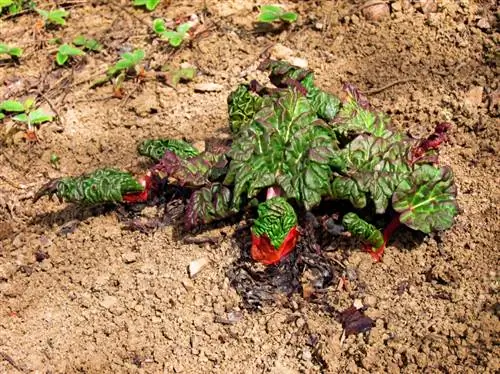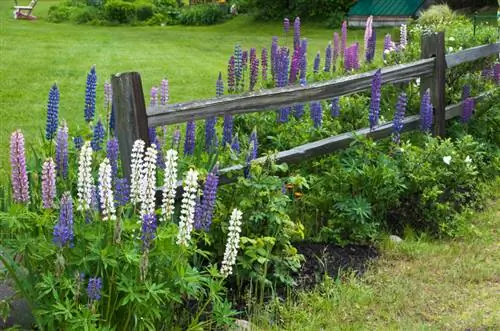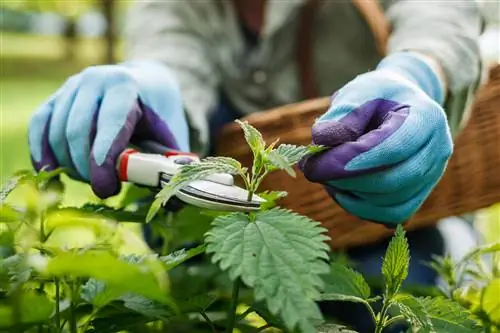- Author admin [email protected].
- Public 2023-12-16 16:46.
- Last modified 2025-01-23 11:20.
Lupins produce so many seeds that you can easily collect them yourself. But the hardy ornamental plants can also be propagated and maintained in the garden for several years by dividing roots or cutting cuttings.

How can you successfully propagate lupins?
Lupins can be propagated by sowing, root division or cuttings. Seeds can be sown in autumn or spring or grown in seed pots. For older plants, dividing the roots or cutting cuttings in spring is possible to obtain new plants.
The three methods of propagating lupins
- Sowing
- Root division
- Cuttings
Growing lupins from seeds
Lupins are easiest to grow from seeds. You can collect the seeds yourself from fully bloomed flower spikes or buy them in a specialist store. Here you can choose between colorful mixtures and single-colored lupine varieties.
The seeds are sown straight away in the garden either in autumn or spring. Alternatively, you can also use nursery pots for early cultivation and later plant the young plants in the garden or a pot.
Note that the seed of ornamental lupins is poisonous and must be kept out of the reach of children and animals.
Division of lupine root
If the lupins have become very large and you have to dig them up anyway due to space constraints, you can divide the roots for propagation.
It is not easy to get the whole root out of the ground undamaged because the lupine has very long roots. Be careful not to damage the roots too much when digging or dividing.
The root is pierced with a spade so that at least five eyes remain on each section. The root pieces are then planted in the desired location and watered well.
Cut cuttings for propagation
The lupine plant forms new shoots in the middle of the plant. These are cut off as low as possible in early spring when they are at least ten centimeters long.
The cut pieces are placed in a growing bed or a deep growing bowl and kept well moist. After about six weeks, the cuttings will have formed enough roots so that you can plant them in the garden or a pot.
Tips & Tricks
Lupins are often grown as green manure in the garden or in fields. Unlike ornamental perennials, these plants do not develop impressive inflorescences, but are rather inconspicuous. When purchasing, pay attention to seeds or plants that are labeled as ornamental plants.






